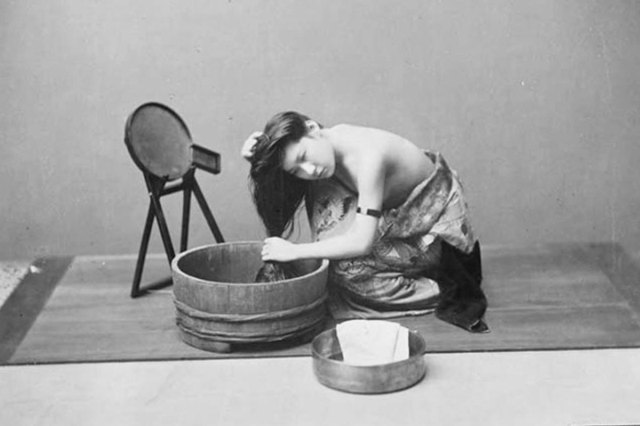What Did People Do Before Shampoo?
Shampoo as we know it today is less than a century old, but the act of hair-washing stretches back thousands of years. So what did people do before sudsing up in the shower?
A clue can be taken from the word “shampoo” itself. It comes from the Hindi champo, meaning “to massage, press, or knead” — indicative of some of the early hair-cleansing practices, even if it was just with plain old water. Only later did the term come to describe what we now think of as washing our hair. Here’s a look at how people kept their locks shiny before modern shampoo.

Ancient Cleansers
Around 4,000 years ago in the Indus Valley (modern-day Pakistan and northwest India), washes formulated specifically for hair began to emerge. Soapberries — fruit from the sapindus tree — were boiled with dried Indian gooseberries, also known as amla, to make a gentle cleansing solution. The soapberries produced a lather, while the amla’s fatty acids and vitamin C helped nourish tresses. Centuries later, the Yao people in southern China had a similar tradition, washing their famously long hair with rice water, a custom that continues today.
Rudimentary soaps made from animal fats and plant ashes were common in ancient Mesopotamia, Egypt, Greece, and Rome, although it’s unclear if these harsh concoctions were used for personal hygiene or for other cleaning such as laundry. Indeed, Romans typically maintained their hair simply by combing it and applying oils. Hair-washing wasn’t a regular habit, but rather a ritual one: Plutarch described women washing their hair before accessorizing it with flowers for the festival of Nemoralia in honor of the Roman goddess Diana.
In Egypt, soapwort plants were used to wash hair. These plants contain natural compounds known as saponins that create a mild lather when crushed. Animal fats were added for conditioning, citrus juices helped clean, and fragrant oils made it all smell good. Across the Atlantic, many Indigenous peoples in North America also used plants with saponins, such as yucca. The roots were peeled and ground into a sudsy pulp, then mixed with water to wash both hair and skin.

















